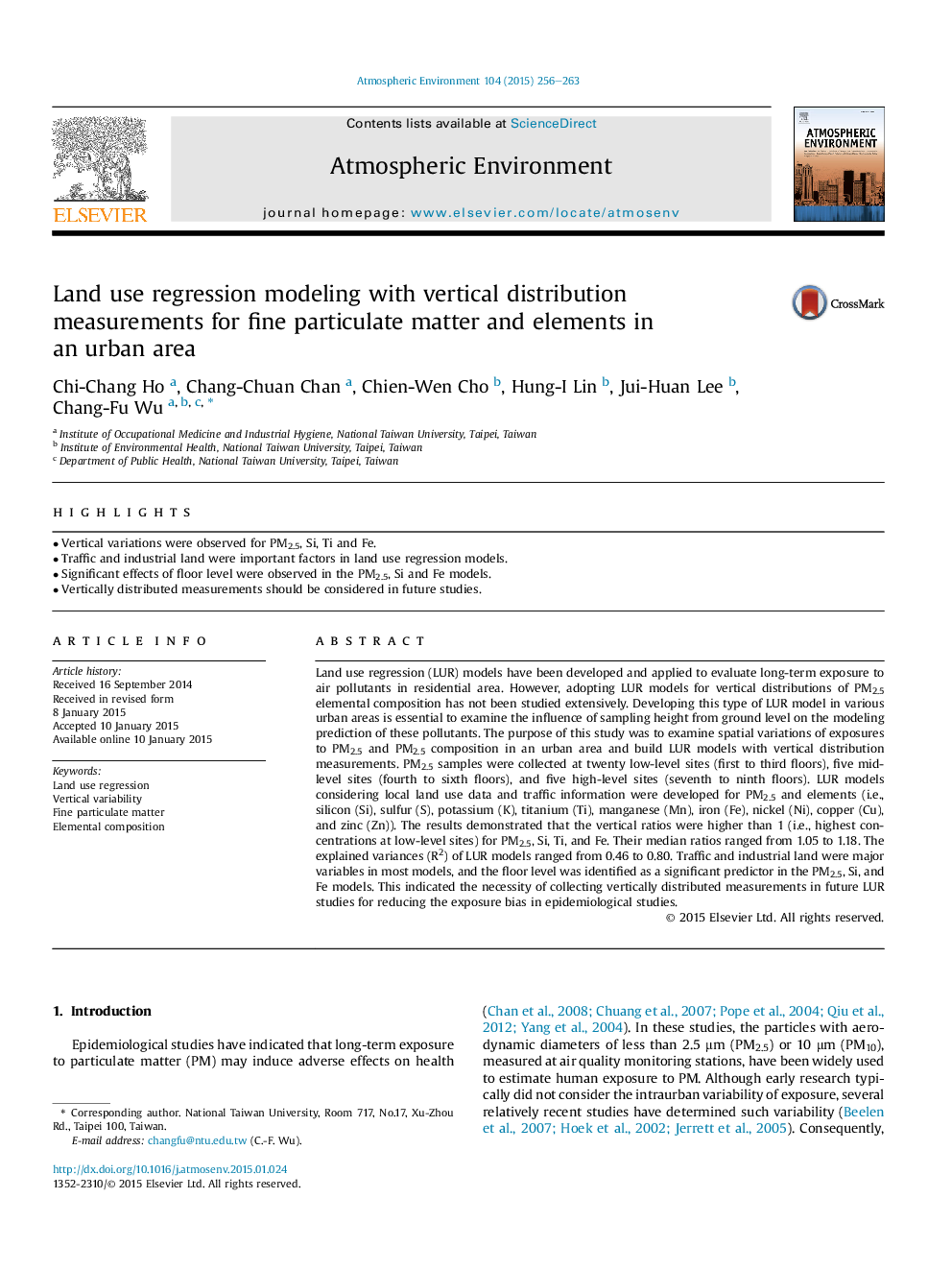| Article ID | Journal | Published Year | Pages | File Type |
|---|---|---|---|---|
| 6338796 | Atmospheric Environment | 2015 | 8 Pages |
Abstract
Land use regression (LUR) models have been developed and applied to evaluate long-term exposure to air pollutants in residential area. However, adopting LUR models for vertical distributions of PM2.5 elemental composition has not been studied extensively. Developing this type of LUR model in various urban areas is essential to examine the influence of sampling height from ground level on the modeling prediction of these pollutants. The purpose of this study was to examine spatial variations of exposures to PM2.5 and PM2.5 composition in an urban area and build LUR models with vertical distribution measurements. PM2.5 samples were collected at twenty low-level sites (first to third floors), five mid-level sites (fourth to sixth floors), and five high-level sites (seventh to ninth floors). LUR models considering local land use data and traffic information were developed for PM2.5 and elements (i.e., silicon (Si), sulfur (S), potassium (K), titanium (Ti), manganese (Mn), iron (Fe), nickel (Ni), copper (Cu), and zinc (Zn)). The results demonstrated that the vertical ratios were higher than 1 (i.e., highest concentrations at low-level sites) for PM2.5, Si, Ti, and Fe. Their median ratios ranged from 1.05 to 1.18. The explained variances (R2) of LUR models ranged from 0.46 to 0.80. Traffic and industrial land were major variables in most models, and the floor level was identified as a significant predictor in the PM2.5, Si, and Fe models. This indicated the necessity of collecting vertically distributed measurements in future LUR studies for reducing the exposure bias in epidemiological studies.
Related Topics
Physical Sciences and Engineering
Earth and Planetary Sciences
Atmospheric Science
Authors
Chi-Chang Ho, Chang-Chuan Chan, Chien-Wen Cho, Hung-I Lin, Jui-Huan Lee, Chang-Fu Wu,
